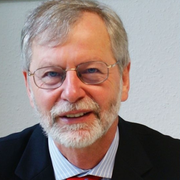Seminar on "Evolution of microstructure, texture and strength during severe plastic deformation of CrMnFeCoNi high-entropy alloy".
Events | Mechanical Engineering
Seminar on "Evolution of microstructure, texture and strength during severe plastic deformation of CrMnFeCoNi high-entropy alloy".
November 1, 2017 8:30 AM

Speaker
Professor Werner Skrotzki
Location
Elings Hall Room 1601
Type
Seminar
An equiatomic high-entropy alloy CrMnFeCoNi was severely deformed at room temperature by high pressure torsion (HPT) up to shear strains of about 170. Its microstructure and texture were analyzed by X-ray diffraction (X-ray line profile analysis and X-ray microdiffraction, respectively). It is shown that at a shear strain of about 20 a steady state domain/grain size of 24 nm and a dislocation density of 3 × 1016 m-2 is reached, while the twin density goes over a maximum of 2% at this strain. The texture developed is typical for sheared face-centred cubic metals, but it is extremely weak. Moreover, the microhardness was measured after HPT as a function of shear strain. The results will be discussed with regard to the mechanisms of deformation, including dislocation slip, twinning and grain boundary sliding.
W. Skrotzki1, A. Pukenas1, B. Joni2, E. Odor2, T. Ungar2, 3, A. Hohenwarter4, R. Pippan4, E.P. George5, 6
1 Institute of Solid State and Materials Physics, Technische Universität Dresden, D-01062 Dresden, Germany
2 Department of Materials Physics, Eötvös University, H-1117 Budapest, Hungary
3 Materials Performance Centre, School of Materials, The University of Manchester, Manchester M13 9PL, UK
4 Department of Materials Physics, Montanuniversität Leoben, A-8700 Leoben, Austria
5 Materials Science and Technology Division, Oak Ridge National Laboratory, Oak Ridge, TN 37831, USA
6 Department of Materials Science and Engineering, University of Tennessee, Knoxville,
TN 37996, USA
Prof. Skrotzki earned his doctoral degree at the University of Göttingen. After a two years postdoc time at Cornell University he did several years of research in Structural Geology. Since 1993 he is Professor for Metal Physics at the Dresden University of Technology. His main research fields comprise:
- Mechanisms of the plasticity of metals, intermetallic compounds, semiconductors, ionic crystals, rocks (yield stress, work-hardening, dynamic recovery, steady state creep, solid solution and precipitation hardening, fracture)
- Mechanisms of texture development during solidification, deformation, recrystallization, phase transformation, deposition
- Mechanisms of monotonic and cyclic deformation of nano-/submicrocrystalline materials
- Structure and properties of interfaces
- Influence of barriers on short crack growth.